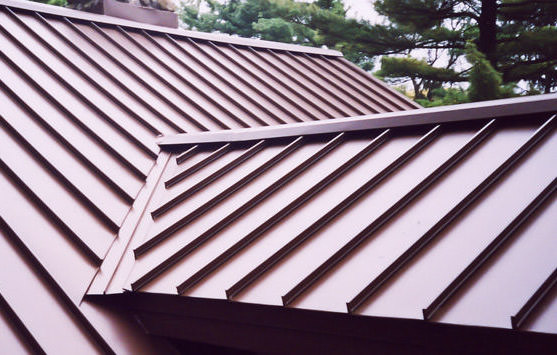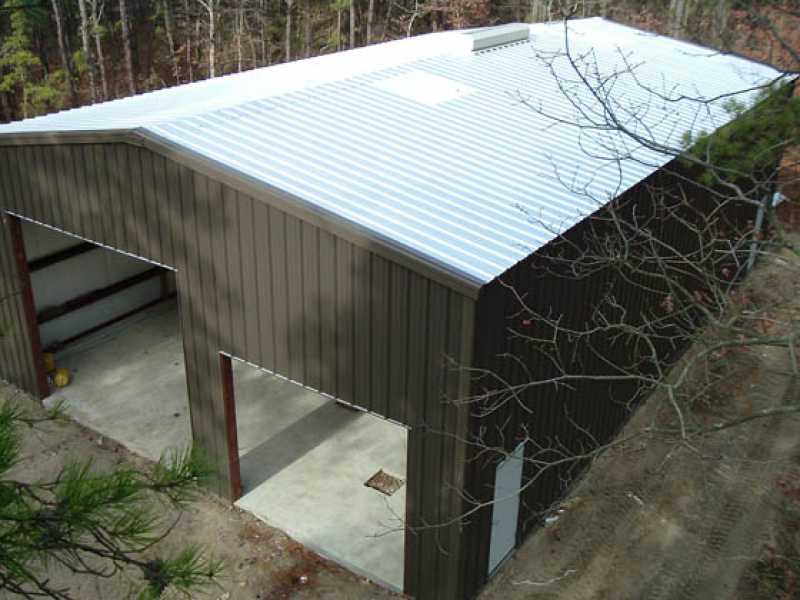Metal roofs are built to last. Understanding how to care for your metal roof will help extend its lifespan and save you time and money in the long run. Here are some tips to help you do just that.
The Importance of Routine Maintenance for a Metal Roof
A metal roof provides an exceptional design that is attractive and durable. The absence of shingles or tiles means they require little maintenance, while their durability means they last for decades. That’s why they’re often used for a warehouse or home.
But metal can get scratched, dented or corroded. It can degrade and leak. Routine maintenance allows you to spot these problems before they lead to damage or cause structural issues. Cleaning and maintaining your metal roof doesn’t just protect your investment. It also adds curb appeal.
Staying Safe While Inspecting and Maintaining Your Roof
It is crucial to take necessary precautions when you’re inspecting a roof. Your safety is the most important. Use proper safety equipment to safeguard yourself from falls and other injuries.
Understanding and obeying safety laws and OSHA regulations is vital. If you’re not confident about your safety and aren’t familiar with procedures to safeguard your well-being, it’s best to err on the side of caution and call a professional.
Some guidelines for staying safe while working on a roof include:
- Avoiding the area when it is slick from precipitation
- Watching out for dry debris, such as leaves and pine straw, which can be slippery
- Being extra careful when approaching the edge of the roof
- Using three points of contact when moving on steep slopes
- Stepping on flat areas that are supported by structural components
- Avoiding stepping on gutters, flashings or skylights
Excessive foot traffic can damage a roof. You can often inspect many areas visually by using a ladder and avoiding stepping on the roof altogether.
How Often Should You Have Your Roof Maintained?
Whether you have a warehouse, office or home with a metal roof, you should inspect it at least twice a year. If you live in an area with severe weather or have an older roof, you may want to perform roof maintenance more frequently. Being consistent with preventative maintenance can prevent you from having to deal with major repairs in the future.
In general, you should inspect, maintain and repair your roof:
- Before and after the winter if you experience snow or freezing weather
- Before and after hurricane season in high-risk areas
- Several times a year in high-wind or high-humidity regions
After a heavy storm, examine the roof to ensure that it has not been impaired. Encourage water drainage and prevent scratches by removing debris from all surfaces, including gutters. Tighten loose fasteners and flashing. Check for holes and dents. Eliminate standing water.
You should also inspect your roof after any professionals from other industries have been on it. Things to look for include spilled chemicals, abrasions in the coating and damage from people walking on the surface.
How to Maintain a Metal Roof

Below is a checklist that can serve as a guideline for maintaining your metal roof. You can also follow this checklist to keep your Allied Steel Buildings in great shape.
1. Keep It Clear
Leaves, twigs and even garbage can make their way on your roof, settling into low spots and crevices. These can impede water drainage, causing pooling and runoff problems. The friction that’s caused as debris moves along the roof can scratch the coating. Keep your roof clear of these objects.
While you do that, look for wear-and-tear, abrasions, chipping and other damage. When you do this regularly, you will notice what’s normal and what’s not. If you see damage, contact the roofing material manufacturer to determine the best action plan. Some will provide you with instructions and product to touch up the coating. For serious problems, you may need to reach out to a professional.
2. Wash the Roof
Mildew, grime and stains build up on your roof over time. These issues aren’t as easy as dead leaves to spot and take care of. However, cleaning the roof regularly can prevent buildup and make it last as long as possible. The manufacturer should provide you with instructions for cleaning the roof so that you don’t damage it.
3. Inspect and Reseal
Any area with flashing or fasteners is vulnerable to leaks and damage. Check these spots at least once a year. Look for missing pieces or loose parts. Use urethane sealant to protect penetrations.
4. Check the Interior
Look inside the building for signs of moisture or leaks. This could mean that something on the metal roof is damaged or failing. If you do have a leak, think twice before applying caulk or a similar product to the surface of the roof. Those solutions are temporary. Contact a professional to seek out and fix the source of the problem.
5. Consult the Manufacturer
If you’re planning to add anything to your roof, such as curbs, vents or gutters, contact the manufacturer first. They may have specific recommendations for making these additions in a structurally sound manner.
Some metals corrode when they’re exposed to other metals directly or by the flow of water. Be careful when adding elements to your roof. Using the wrong materials could void the warranty.
Make Sure Your Metal Roof Lasts as Long as Possible
Metal roofs are one of the longest lasting roofing systems available today. The low-maintenance, durable design makes them an excellent choice for homeowners looking to save time and money on their upkeep needs. Many of the same maintenance guidelines apply to Allied Steel Buildings too. A little extra care goes a long way toward giving your metal structure a long life.

